Corporate Responsibility Practitioner Roundup: Totem Power


In the run up to the COMMIT!Forum, CR Magazine spoke with Brian Lakamp, Founder and CEO at Totem Power. Totem's smart hub combines modern communications, advanced energy, and distributed intelligence into a single, powerful platform for modern campuses, retail centers, commercial facilities, cities and more. We spoke with him about being a practitioner in the clean energy space.
CRMag: As a practitioner, how does telling the Corporate Responsibility (CR) story feel different from everyday sales & marketing?
Brian Lakamp: Totem is the first smart city platform that is dedicated to telling its CR story through its core offering. Totem was founded to grow and connect responsible and resilient communities– and that is at the heart of the company. Corporations are missing out on massive opportunities to leverage their CR and sustainability investments beyond their PR and company messaging. By installing Totem into their campuses or parking lots, corporations can breed awareness and engagement with corporate sustainability commitments across customers and employees in ways that that haven’t been available previously. By bringing clean energy into the conversation, these actors will be recognized for translating their efforts into tangible, long-term impacts for their key constituents.
CRMag: How has your understanding of CR's value proposition — both within your company or sector and as a general matter — evolved over time?
BL: It is increasingly clear that corporations need to re-evaluate the longevity and impact of their corporate sustainability initiatives. By increasing investment in renewables, companies can reduce their reliance on fossil fuels that pollute the communities they serve. They can magnify that impact and celebrate their investments in people and the planet with “PDR” – public displays of responsibility. We think it’s essential to showcase these corporate investments in places that create broad awareness and ultimately drive energy literacy.
The market is transforming because companies, citizens and cities are voicing their commitment to live more sustainably. Now, more than ever, the opportunity presents to invest in infrastructure that fosters smarter energy, communications and transportation to accommodate our increasingly connected world.
How do you convey CR's value proposition to your many different stakeholders? (I break it down by audiences: employees, customers, shareholders, regulators and other influencers.)
BL: Totem delivers modern services in a form that also drives broader impact. It’s about levered value that accrues across multiple stakeholders , including:
· Corporations: Totem’s design allows corporations to install visually stunning infrastructure into their parking lots and corporate campuses. Totem delivers critical services and simultaneously showcases corporate social responsibility by making it a tangible and interactive part of the built environment. The impactful and experiential nature of Totem makes it a powerful tool for CR.
· Employees: Corporations will retain and motivate employees by offering modern services such as EV charging, wireless coverage and more. With Totem, corporations have a means to deliver those services and powerfully convey corporate ethos around sustainability.
· Customers: Customer experience is one of the most important aspects of running a business. Totem provides corporations a new and differentiated tool to drive value for customers. Totems deliver critical services for the modern facility, while also providing proof-points to reinforce CR. Not only are customers more likely to enjoy the spaces they frequent, but they are more likely to identify with companies that stand for something they believe in.
· Shareholders: In the end, the value to employees and customers shows up in corporate ROI. Totem’s ability to ultimately drive accelerated outcomes and differentiated market positioning for companies is music to shareholders.
CRMag: What is your CSR/sustainability corporate strategy for 2017 and beyond?
BL: Our corporate mission is to enable integration of renewable energy sources into facilities and the larger grid at scale via distributed energy storage. We’re driving beyond just renewable offsets, toward 100% self-consumption of the renewable energy sources we subscribe to. That’s a clear goal for ourselves and for our partners as well.
We’re also focused on incorporating materials and processes that minimize our footprint. That means constantly driving to minimize shipping (local manufacturing), lower impact materials (better battery chemistries, structural elements), and strategies for end-of-life reuse. We’re early in our journey, and excited by how far we think we’ll be able to push things.
CRMag: What is your “Game-changer” message, program, philosophy or take away for our audience
BL: Totem is making renewable energy and smart transportation accessible and visible. Totem is based on the belief that advancement of clean energy, next generation services and responsible practices will be accelerated by bringing smart utility out of the shadows.
Today, too many of the biggest advances in the way we power and connect facilities are hidden on rooftops or behind buildings. Totem is designed to activate both the capabilities and the conversation. The company’s impact will be measured not only by looking at energy savings and the transition of renewable energy, but also by the level of engagement from the community.
Join us at the COMMIT!Forum to speak to practitioners like Brian.
Brace yourself: get your telecoms and procedures ready for MiFID II
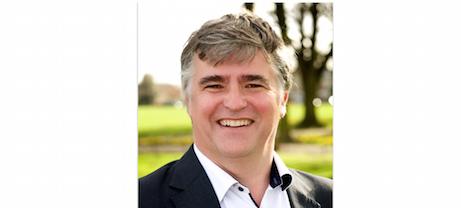
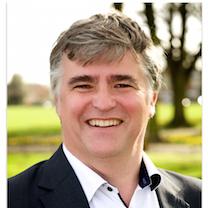
3p Weekend: Elon Musk Claims “Verbal Approval” to Build East Coast Underground Hyperloop; Cities Shrug
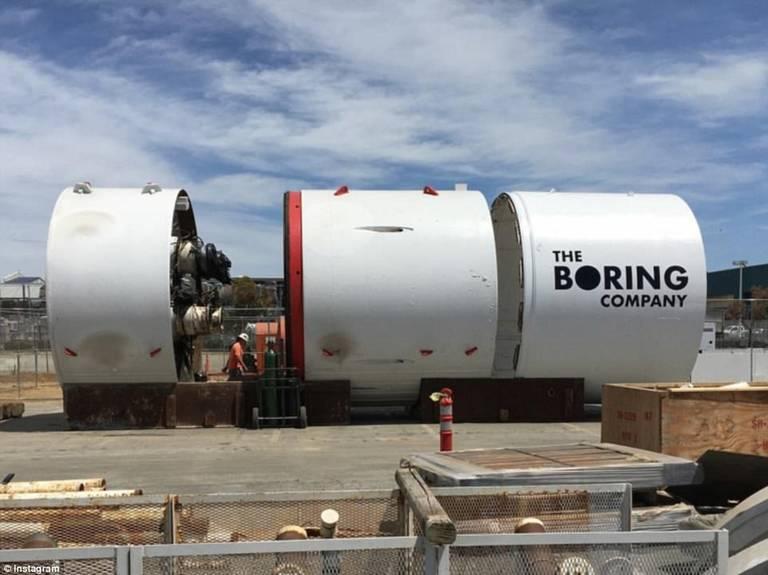

With a busy week behind you and the weekend within reach, there’s no shame in taking things a bit easy on Friday afternoon. With this in mind, every Friday TriplePundit will give you a fun, easy read on a topic you care about. So, take a break from those endless email threads, and spend five minutes catching up on the latest trends in sustainability and business.
Donald Trump’s ability to score attention via social media is unparalleled, but Elon Musk is not far behind. The CEO of Tesla scored heaps of excitement, mixed with some scorn, when he announced yesterday that he had “verbal government approval” to build an underground tunnel for a Hyperloop that would link New York City to Washington, D.C.
[embed]https://twitter.com/elonmusk/status/888053175155949572[/embed]
Musk claims The Boring Company's Hyperloop system could transport citizens from DC to New York in 29 minutes. The Boring Company first began as a joke born of traffic frustration, then became pipe dream. But since Musk first floated the idea of the Hyperloop in 2013, various start-ups have tested the idea. Hyperloop One, for example, launched its first test run last year.
Musk’s reputation as a master technology and business disruptor is also taking shape with The Boring Company. Earlier this year, the company’s technology, which supposedly can dig and reinforce tunnels at the same time, started a test project in Los Angeles. Musk in part launched the venture out of his criticism of conventional tunnel construction, which in the most extreme cases can cost $1 billion a mile. A recent Wall Street Journal assessment of tunneling infrastructure projects in New York City estimated that the costs range from $19,000 to $1 million per foot, though advances in technology both lower costs and speed up the process.
The northeastern U.S. has long relied on rail to move travelers from D.C. to Boston, though critics of Amtrak say that the system is expensive and slow despite the 2000 rollout of Acela Express.
But as of press time, officials in Washington, Baltimore, Philadelphia and New York, the four largest cities that would be served by Musk’s conceptual Hyperloop, have denied any such approval for a project. “Nobody in City Hall, or any of our city agencies, has heard from Mr. Musk or any representatives of his company,” said a spokesman for New York City Mayor Bill de Blasio in an emailed statement to the Los Angeles Times.
Image credit: The Boring Company
$2M in Fines for ExxonMobil for Violating Russia Sanctions
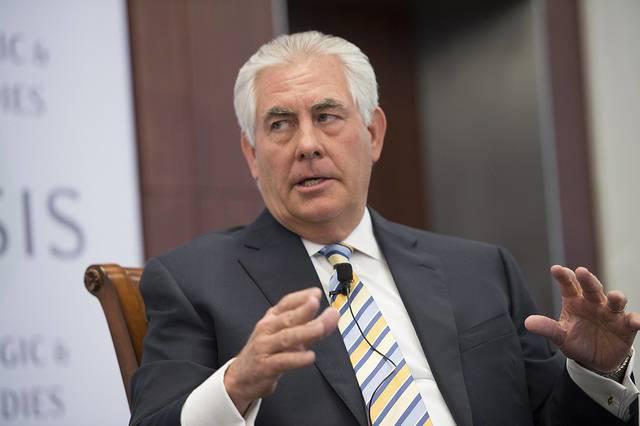

The U.S. Department of the Treasury announced yesterday that it will fine ExxonMobil $2 million for violating U.S. sanctions imposed on Russia after the country's military intervention in Ukraine. According to Treasury officials, presidents of ExxonMobil’s subsidiaries signed eight legal documents with the intention to develop oil and gas projects across Russia. The agreements were reached with Igor Senchin, President of Rosneft OAO, a Moscow-based energy company that reportedly had revenues of almost $65 billion last year.
The problem is the agreements between ExxonMobil and Rosneft were finalized almost two months after the Obama White House issued sanctions, which included business dealings with certain statesmen believed to be involved in the military interventions. Senchin was one of many Russian officials identified on a Treasury Department list as a “Specially Designated National,” or SDN. Treasury Department officials block these individuals’ assets whenever possible, and they are almost always prohibited from dealing with American citizens.
The sanctions came via executive order because Russia’s intervention in Ukraine resulted in many human rights crises.
But ExxonMobil went right ahead and closed business deals anyway.
The company argued that the agreements reached with Senchin and Rosneft were more of a “personal” rather than “professional” nature, but the Treasury Department begs to differ, retorting that the executive order covering the sanctions offered no such distinctions. “ExxonMobil demonstrated reckless disregard for U.S. sanctions requirements when it failed to consider warning signs associated with dealing in the blocked services of an SDN,” said a Treasury Department statement explaining the financial penalty it levied against the oil giant.
Furthermore, the Treasury Department described ExxonMobil’s conduct as “egregious,” and criticized the company for not revealing these dealings when disclosing information to the department’s Office of Foreign Assets Control (OFAC).
The timing of yesterday's announcement arrived six months to the day after Donald Trump was inaugurated, while his administration suffers through one of its worst weeks, politically. The failure of the U.S. Senate to pass any health care bill was unsettling enough for Trump and his allies. Then the President’s eye-popping interview with the New York Times, in which he admitted he would not have chosen loyalist Jeff Sessions as Attorney General if he has known the former Alabama senator would have recused himself from overseeing the Justice Department’s Russia investigation. This claim earned Trump plenty of rebuke from right-leaning commentators.
The fine imposed on ExxonMobil is also a black eye for Secretary of State Rex Tillerson, who was CEO of the company at the time those illegal oil and gas agreements were reached. Although environmentalists, as well as critics of Trump in general, protested Trump’s selection of Tillerson as Secretary of State, the former CEO has been viewed as one of the more “level-headed” and low-key leaders within the current administration; and observers say he often lends a sense of gravitas and professionalism that analysts say is missing from the White House.
Shortly after the Treasury Department publicly revealed ExxonMobil’s fine, the company announced that it would legally challenge the ruling. “OFAC’s action is fundamentally unfair and constitutes a denial of due process under the Constitution,” said the company in a filing submitted to a U.S. district court in northern Texas, “because market participants, including ExxonMobil, did not have notice of the interpretation OFAC now seeks to retroactively enforce.”
ExxonMobil argues that although the sanctions were announced in March 2014 and ExxonMobil’s contracts were signed two months later, the company claims the Obama Administration and OFAC still had not formulated a clear policy governing the sanctions against Russia in July of that year - and did not notify ExxonMobil about any potential violations until a year later.
The $2 million-dollar fine is the maximum civil penalty for such violations, and that level of severity could help support ExxonMobil’s allegations that the amount is “fundamentally unfair.” Of course, as Devin Henry of The Hill points out, that is a relative pittance for ExxonMobil, which reaped $7.8 billion in profits last year.
ExxonMobil’s claim that there was a lack of clarity over the Russia sanctions induces some head-scratching. A company with as deep of a well of legal representation and advice as ExxonMobil should know better – and meanwhile, the company has expressed publicly that it has long been keen on ensuring its operations are both ethical and compliant. “We expect our employees, officers and directors to comply with all applicable laws and regulations and seek to work with suppliers and business partners who share our commitment to human rights,” the company announced in its most corporate citizenship report.
Image credit: CSIS/Flickr
More Drilling Than Ever on Public Lands


President Trump needs a win these days. Trumpcare is dead in the water -- for now. Tax reform legislation is pretty much in the same spot. Divisiveness and back-biting in the Republican-led Congress is at an all-time high. With Special Counsel Robert S Mueller digging even deeper into Trump's personal and public business dealings, the president needs more than ever to prove his campaign promises are possible.
Interior Secretary Ryan Zinke may very well be his problem-solver.
Known for his boots-on-the-ground approach to land management (and his horseback-riding skills in Washington DC), Zinke has wasted no time in addressing Trump's campaign list, at least when it comes to promoting oil, gas and coal leases on public lands.
With less than six months under his belt as secretary, he is already having immediate effect on how the department manages those public resources. He has made dozens of rule changes and posted hundreds of new procedural notices. A department that was once viewed by the Government Office of Accounting (GAO) as a "high risk" for "fraud, waste, abuse and mismanagement," or just in need of "transformation" is now receiving intense scrutiny under Zinke's watch.
And for Trump's interpretation of what it takes to "make America great again," that's good news. Because it's opening the door to new oil, gas and coal leases in parks and public lands.
- This month he took steps to speed up oil and gas permitting, promising to cut what was once a cumbersome process to a 30 day review
- He's put a natural gas waste rule on hold that, according to The Hill opinion writer Ryan Alexander, actually had the potential to save money for the department (but really, really irked fossil-fuel companies)
- Drilling has been OK'ed for the Beaufort Sea in the Arctic; another highly controversial move.
- Lease sales have been given priority in areas of Utah and Wyoming that serve as habitat for endangered species.
- He has launched a new committee to examine new ways to get more money for its federal resources, insisting that "[it's] important that taxpayers get the full value of traditional and renewable energy produced on public lands."
What is absent of course, is any concise plan to ensure that delicate habitats aren't undermined by oil and gas drilling, particularly in places like the Arctic, where increased exposure to global warming is a concern. But environmentalists and state officials are also questioning the practicality of some of the administration's decisions, stating they nullify "much-needed, common-place regulations that were designed to protect the environment.
And then there's coal, formerly a major resource on public lands. Zinke has already lifted an Obama-era hold on coal mining on public lands, but it's unclear whether it will attract the kind of revenue that the federal government is hoping for. With this week's announcement by the CEO of CSX freight railroad that he won't be buying any more coal cars for his shipping business because "coal is not a long-term issue," even the corporations that once made their empires from coal, oil and gas are wondering whether fossil fuel resources are a thing of the past.
As BlackRock pronounced earlier this year, when it told Australian Financial Review "coal is dead and oil faces peak demand," it's yet to be seen if Zinke's efforts will really make fossil fuel mining and drilling a going concern for the U.S. government -- or for the U.S. taxpayer that has supported a growing renewable energy industry.
Flickr image: US Department of Interior (public domain)
Skyrocketing Subprime Auto Loan Defaults Put Cities' Transport Systems at Risk


A decade after the collapse of the subprime home mortgage industry almost pushed the U.S. economy over a cliff, now subprime auto loans are at a tipping point, according to a recent Bloomberg report. And just like those bad home mortgages of 10 years ago, banks securitize these auto loans and sell the repackaged bonds to investors. While most analysts predict the outcome will be nothing close to the devastating global financial crises of 2008-2009, the rate of fraud and delinquencies resembles the mid-2000s bubble that ended up catapulting global markets into chaos.
Many of the world’s largest banks are involved with this surge in subprime auto loan underwriting. Bloomberg has estimated that Wells Fargo’s market share of securitized auto loans stands at 23.5 percent, even though the bank’s own analysts warned in March that investors should minimize exposure to these bonds. But with these securities boasting yields as high as 5 percent – often more than twice the rate of U.S. Treasuries, for example – investors are still snapping them up. The auto bonds market could soar in value as high as $26 billion this year, a 250 increase from 2009, when car manufacturers were suffering from the financial crises’ hangover.
But with some industry experts suggesting as much as $12 billion in bad auto loans may have to be written off this year, the relentless thirst on Wall Street for this type of debt could be unhappily quenched at any moment.
One of the big drivers behind what Bloomberg’s Gabrielle Coppola describes as a “race to the bottom” is the relationship between the Spanish banking giant Banco Santander and the automaker Chrysler. Since 2013, as Chrysler’s sales roared, the two companies launched a relationship that has evolved into one of the sector’s most prolific subprime lending machines. Easy auto financing was made available to consumers, who otherwise had no other options. Financing helped fuel car sales this decade.
But federal and state investigators have found that Santander has permitted dodgy lending practices by dealerships in as many as 30 states. For example, researchers have found that only up to 10 percent of borrowers had their incomes verified; many had low or even no credit scores. Meanwhile, terms for auto loans have stretched as long as 84 months (7 years), previously unheard of in an industry where the 60-month car loan has long been the norm. “It’s quite likely that the exuberant 2016 auto sales figures were inflated by easy-to-get subprime loans with low, long-term payments, enticing buyers to purchase more car than they could afford,” concluded Olivier Garret on Forbes.
Earlier this year, Santander reportedly paid almost $26 million to settle lawsuits launched by the attorneys general of Delaware and Massachusetts over the tactics it employed to finance and securitize subprime auto loans.
Other factors are also driving the subprime auto lending boom and its soon-to-be bust. With more citizens relying on ridesharing as their sole source of income, drivers for Uber and Lyft increasingly take on these loans in order to have a suitable vehicle to drive. Last year, Uber launched a financing program for its drivers who were unable to secure an auto loan through conventional means.
New York City epitomizes the struggles of Uber drivers who often find themselves stuck with cars underwritten with onerous loans or leases. When Uber arrived in New York earlier this decade, part of its pitch to drivers was to free them of the city’s medallion system, in which the owners of these taxi permits would rent them out at exorbitant rates to the largely immigrant workforce. But as Alison Griswold vividly described this new system on Quartz, the result has been a similar form of indentured servitude, only with different type of shackles. Medallion owners have been replaced by shifty auto lending companies, which have convinced drivers to sign contacts that are hard to differentiate from those that would be issued by loan sharks.
Many drivers find themselves burned by “deep subprime” loans and leases within a system rife with abuse across the Big Apple. “When Uber first came to New York it talked about freeing drivers from such practices,” wrote Grisworld. “Instead the company has pushed more drivers into burdensome leases and rentals, and lent legitimacy to the way these dealers do business.”
A collapse of the subprime auto loan industry would not only be a huge setback for banks, but also for many cities, which are increasingly cutting back on public transportation services as they surmise ridesharing can pick up the slack. The problem is, the likes of Uber and Lyft (which still are not profitable) have a hard time recruiting drivers, as many burn out when they realize they can’t just drive when they want and make easy money doing so. Easy access to auto loans is one such carrot, but the stick of debt, and the burden of falling behind on payments, often pushes drivers to give up on their ridesharing gigs. “Uber creates a debt-to-work pipeline,” wrote Mimi Kirk on the blog CityLab in her article on the pitfalls of being an Uber driver. “The drivers are taking on significant financial risks to get the chance to earn a wage.”
But that system is not working, so while the big banks may suffer a few nicks, transport systems could confront a big gash – and meanwhile, more consumers will find themselves in a financial death spiral.
Image credit: Adam Fagen/Flickr
Even Smart People Are Still Arguing About Fossil-Free Electricity


By Felix Kramer and Rosana Francescato
At a pivotal moment for climate strategies, scientists and business leaders have started a public debate about how fast and how fully we can leave oil, coal, and gas behind. More people now recognize climate change as the pre-eminent issue of our time, a core focus of resistance, and a source of massive economic opportunities.
Imagine looking back and saying, "The Anthropocene Epoch started dangerously, as human activity threatened our future. But that sparked an unprecedented transition that protected our air and water. Every country pulled together to ensure a livable world. Our confidence, ingenuity, and resolve made it humanity's greatest triumph."
After the U.S. government walked away from its international climate commitments, other key players including companies, cities, and states – where much of the action was already taking place – upped the ante. Policies, legislation, and entrepreneurship increasingly reflect this urgency. Globally, cities and companies are setting timetables to get off fossil fuels. Some are already there! Roadmaps created by Stanford engineer/atmospheric scientist Mark Z. Jacobson and the Solutions Project he co-founded helped make "100 percent renewables by 2050" a meme.
But some have privately questioned the goal's assumptions, research, and feasibility. Now 21 prominent climate scientists have issued a comprehensive public critique in the same Proceedings of the National Academy of Sciences where Jacobson published in 2015. Jacobson's team gave broad and line-by-line responses, to which the critics responded.
This debate highlights the views of experts who support renewables, but believe the electric grid needs a "many of the above" portfolio. To keep the lights on, they say we may long need 20 percent low- or zero-carbon non-renewable baseload capacity. They favor keeping open most atomic plants. They support efforts to develop affordable next-generation nuclear, CCS (carbon capture & sequestration), hot fusion, and LENR (low energy nuclear reactions). They hope these can be deployed at scale in time to make a difference.
Who's right? As scientists and economists hash it out, former Department of Energy official, physicist, and climate blogger Joe Romm cautions, "the reality of climate change and rapidly improving technology makes it both essential and indeed inevitable that the electric grid will be essentially carbon free by 2055. That's the forest we mustn't miss for the trees."
We're seeing thoughtful coverage and analyses in publications like the Washington Post, E&E News, EcoWatch, Greentech Media, Greenbiz, and Grist. Miraculously, most comments have been serious, respectful, and productive. Regrettably, Jacobson blogged that most of the critical scientists "have a history of advocacy, employment, research or consulting in nuclear power, fossil fuels or carbon capture."
This debate may reach people who haven't heard of the ambitious 100-percent goal or who see "replace fossil fuels with clean energy" as an unrealistic slogan. As leaders constructively explore choices, people will see both sides agree we need to get off fossil fuels -- and that it's achievable.
The climate numbers show why we need to do it. Before coal became a fuel, global atmospheric concentration of carbon dioxide (CO2) was at 280 ppm (parts per million). In 2008, when we'd reached 380 ppm, Bill McKibben and others co-founded 350.org and fueled a movement with a goal understandable in every language. We've just passed 400 ppm and are still heading up.
In fact, a long-term safe, sustainable level may actually be 300 ppm. Returning to those levels means not just slowing greenhouse gas buildup, but actually stopping it and finding ways to reverse it. Can we aim for not merely less bad outcomes, but better lives everywhere?
There's a "business case" for every human being to flourish without poisoning our air and water. By one estimate, achieving the 300 ppm goal would take only 1 percent of global GDP for 50 years. And it would create tens of millions of repair, conversion, and restoration jobs.
The how-much-renewable debate doesn't yet reflect promising emerging pathways. Paul Hawken's team at Project Drawdown showcases 100 mostly natural "Regenerative Solutions." The Healthy Climate Alliance will soon go public with approaches to "Climate Restoration," including CDR (carbon dioxide removal), to return to 300 ppm. And Elon Musk claims that 100 battery Gigafactories, like the one Tesla built in Nevada for $5 billion, could store renewable energy everywhere 24/7/365.
Putting a price on carbon would significantly improve the business model for 100 percent renewables. Despite powerful opposition forces, plans like the Citizens Climate Lobby's Carbon Fee & Dividend and the Climate Leadership Council's Carbon Tax and Dividend – supported by some Republican leaders and oil companies – are likely to be adopted in the coming years.
We have the technical, financial, and social means to leave fossil fuels behind -- and we have the momentum. At some point, having built awareness and support, the United States will decide to go all-in. Until then, though we don't yet know our exact route, can we agree on our destination?
The sooner we get off fossil fuels, the better off we'll be. By aiming high we'll be personally, morally, and socially responsible to ourselves and to future generations.
Felix Kramer is an entrepreneur who promotes climate awareness and clean energy solutions. His most recent project is ClimatePolitics.info.
Rosana Francescato is a solar communications professional. She's written for PV Solar Report, CleanTechnica, and other publications.
HP Transforms Plastic Bottles into Ink Cartridges and Economic Opportunities
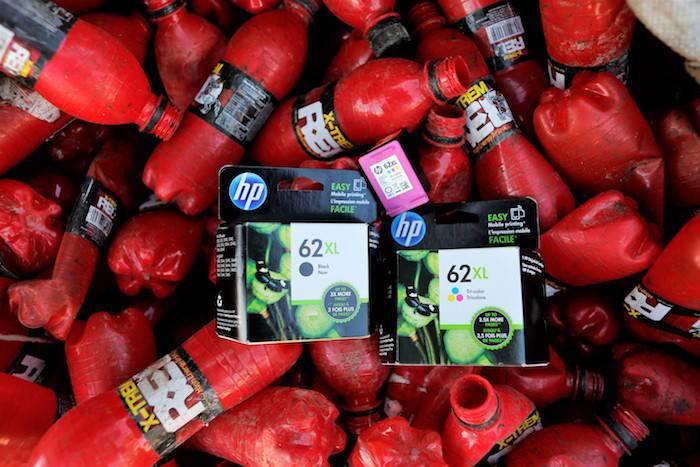

By Sangeeta Waldron
Mountains of rotting garbage are piled high at Truitier landfill, the largest dump in Haiti. The stench alone would drive most people away. Yet, over 300 children currently collect recyclable materials from here, where they and their families are exposed to daily hazardous working conditions. Truitier has always been a city dumping ground.
After the earthquake, waste management has become a complex problem. However, things are happening to create a more sustainable waste management and HP Inc. has announced the launch of Original HP ink cartridges made with plastic from bottles recycled in Haiti.
This enterprise has been made possible through the close partnership with Thread and the First Mile Coalition, which addresses child labor in the ‘First Mile’ of global supply chains, beginning with communities that neighbor Truitier. Together they want to improve the lives of the children by providing them with educational opportunities, including scholarships, as well as full access to medical care, health and safety trainings.
The commitment partners will provide job training for the adult family members of the children, who are also working in the landfill, and will invest over $150,000 in entrepreneurs, micro-enterprises and/or small-to-medium enterprises in targeted neighborhoods. Rosette Altidor, a Haitian collection center owner says, “The work that [Thread and] HP are doing helps me get my children to school, and helps me pay for my home. It motivates me to motivate others to collect plastic as well. Everyone can benefit from clean-up work in Haiti.”
This initiative represents HP’s efforts to reinvent how products are designed, manufactured, used and recovered in a shift toward a circular and low-carbon economy. It opens a new market opportunity, generating a steady revenue stream and partnering to improve conditions for workers. HP is not only creating jobs, but importantly, bringing dignity to the collectors of recyclables in Haiti, while creating sustainable ink cartridges. It also helps prevent plastics from reaching the Caribbean Sea, battling the ever-growing problem of ocean pollution.
HP has long been an industry leader in ‘closed-loop recycling’, combining material from products returned by its customers through the HP Planet Partners program with other post-consumer materials to create new Original HP cartridges. Through 2016, the company manufactured more than 3.4 billion HP ink and toner cartridges using more than 88,900 tons of recycled content material, which includes 3.7 billion post-consumer plastic bottles. By making Haiti a starting point of the supply chain, HP is helping to push social and environmental change.
Sangeeta Waldron writes on women and children; sustainability; climate change; social enterprise and social entrepreneurs. She has a particular interest in India. She is the founder of Serendipity PR, in London, UK, where she works with high-profile brands and organizations in the public, non-profit, and corporate sectors, winning awards for her work from the communications industry. She has been appointed to the Women In Enterprise Taskforce and was until recently chairman of London's leading conscious well-being organization, Alternatives, which hosts leading speakers such as Eckhart Tolle, Deepak Chopra, Marianne Williamson, Neale Donald Walsch and many other well-known names. She describes herself as a Spiritual Entrepreneur, Conscious Explorer; enjoys paying it forward and being a mum.
A version of this post originally appeared on Justmeans
How Airlines are Reducing Food Waste


Food waste is a big problem. An estimated 30 to 40 percent of the food supply in the U.S. alone is wasted. In 2010, about 133 billion pounds of food end up wasted in the U.S., amounting to $161 billion worth of food. Globally, about one-third of all food produced is wasted. Food waste in industrialized countries is about $680 billion. Food that is wasted ends up in landfills where it emits methane, a greenhouse gas with a warming potential 23 times that of carbon dioxide.
Airlines are a big source of food waste. Consider that a flight with 300 people serves 300 meals, and some of the food in those meals goes uneaten. A study on flight waste found that an estimated 500 kilograms of waste, including food waste, is generated per flight.
Some airlines have initiatives in place to reduce food waste. JetBlue composts about 100,000 pounds of food waste and puts it back into soil, which saves about 38 tons of carbon dioxide equivalent. The nutrients in Dunkin’ Donuts and Jamba Juice scraps were composted at upstate New York’s McEnroe Organic Farm. Crewmember volunteers spread the compost in an urban farm at New York’s JFK airport, where 1,000 lbs. of blue potatoes are harvested a season and 2,000 herb plants. The blue potatoes are taken to TERRA’s factory and processed into blue potato chips to conduct research on new flavors and ideas. Any leftover potatoes are donated to New York communities through GrowNYC. The airline’s goal in 2017 is to compost 150,000 pounds of waste.
The Cathay Pacific Group serves over 110,000 meals a day, and inevitably, some of the food served is wasted. To cut down on food waste, the airline joined Hong Kong Airport Authority’s food waste recycling scheme in 2011. Food waste is collected and sorted from its office canteens, restaurants, crew hotel and airport lounges. Two years later, the airline started donating surplus food from its canteens at Cathay Pacific City to a local charity called Food Angel which turns it into meals served to under-privileged families in Hong Kong. Since starting the initiative, 3,655 kilograms of food have been donated. In 2015, the airline began to donate surplus food and beverages from inbound flights to the local food bank, Feeding Hong Kong, and in 2016, 234 tons were collected and donated.
Qantas started a partnership with the food donor OzHarvest. Volunteers from Qantas and catering centers in Sydney, Brisbane and Melbourne collected untouched food from domestic flights. The food is picked up by OzHarvest vans and delivered to charity organizations. The food is collected from all of the airline’s domestic flights and taken to over 1,000 school children a week. At the Brisbane airport, 440 to 880 pounds of food are collected from domestic flights every day.
JetBlue, Cathay, and Qantas all prove that there are business solutions to global environmental problems.
Photo: JetBlue
Sources
http://3blmedia.com/News/T5s-Food-Trash-Turns-Healthy-Soils
http://responsibilityreport.jetblue.com/2016/environment/t5s-food-trash-is-jetblues-eco-treasure
http://responsibilityreport.jetblue.com/2016/JetBlue_SASB_2016.pdf
http://downloads.cathaypacific.com/cx/aboutus/sd/2010/environment/performance_waste.html
http://downloads.cathaypacific.com/cx/aboutus/sd/2016/waste-management/food-waste/index.html
http://discovery.cathaypacific.com/what-happens-to-all-those-uneaten-inflight-meals/
Speed Up Oceanic Carbon Sequestration, to Fight Climate Change


It has been almost a year since carbon dioxide in the earth’s atmosphere surpassed the 400 parts per million (PPM) mark, which some scientists and environmental activists say is a “tipping point” in the struggle to curb climate change. With that 400 PPM mark in mind, the global conversation that comprises electric cars and the development of new clean technologies also includes carbon sequestration, often touted as a way to limit the increase in global temperatures to 2°C this century by sucking carbon out of the atmosphere.
The International Energy Agency (IEA), for example, declared last month that carbon capture and storage (CCS) is crucial in order to slow rising temperatures this century. While projects have developed worldwide, from Abu Dhabi to Norway, critics of this technology repeatedly say that the high expense of this technology is not worth the investment.
But what about storing carbon in the world’s oceans?
The idea of oceanic carbon sequestration has been described by one science writer as “the world’s best bad idea.” No, carbon captured from fossil fuels and other carbon-intensive industries would not just be dumped into the sea. For example, researchers from Harvard University and Columbia University a decade ago suggested that carbon dioxide could be pumped a few hundred yards into the sea floor in deeper regions of the ocean. Those scientists suggested carbon be stored at depths of at least 3,300 feet, where low temperatures and high pressure would prevent that CO2 from dissipating and killing marine life. As in the case with most carbon sequestration ideas, however, this theory worked well on paper or in the lab, but in reality could not scale.
Now scientists at the California Institute of Technology and University of Southern California believe they have found a way to bring oceanic carbon sequestration closer to reality.
The key is carbonic anhydrase, an enzyme that can quickly catalyze CO2 into bicarbonate and other protons. Cal Tech’s Jess Adkins and USC’s William Berelson became curious about the role of calcite in the world’s oceans. Calcite, comprised of calcium, carbon and oxygen, is critical in the formation of limestone and granite, and is also found in shellfish, plankton and the exoskeletons of coral.
Adkins, Berelson and their research team bio-engineered a sample of calcite similar to how it forms in oceanic environments, and dissolved it in seawater. They then added carbonic anhydras, and found that that the enzyme sped up the chemical reaction that helps the ocean sequester CO2 by a rate 500 times faster than how it would occur naturally.
“The implication is that we might better mimic the natural process that stores carbon dioxide in the ocean," said Caltech graduate student and the study’s lead author, Adam Subhas, to Phys.org.
Does this mean we are ready to build pipelines of CO2 to the world’s oceans? Probably not, as the question of how bad ocean acidification is wreaking havoc on the oceans worldwide still generates lively debate within the scientific community. But this research can inspire more research on innovations that can help the earth confront climate change. “Novel molecular structures are a first step toward economical carbon capture at a wide scale,” said Richard Martin in a September 2015 article on MIT Technology Review.
Image credit: Leon Kaye